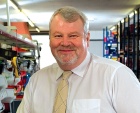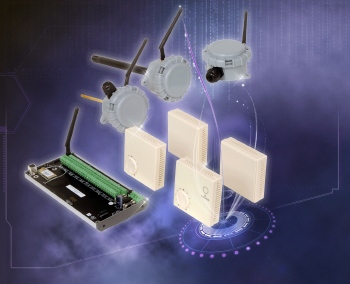The true cost of sensor installation

Why install several sensors when one can do the job of several. And why balk at the cost of wireless sensors when their total installed cost can be much less than an equivalent wired system? Alan Braybrook of Sontay explains what specifiers should be looking for when assessing value for money in HVAC sensors.
Extra charges for items are common place in today’s world. For example, you buy a seat on a budget airline for £5 but by the time you have added on the extra costs for luggage, seat selection and booking fees you would probably have paid the same amount as if you booked with a more expensive operator. And you would get to an airport in the city rather than be flown 100 miles further away than you’d wanted.
This value assessment translates well into the world of HVAC controls, and specifically sensors.
These devices are vital as the eyes and ears of any control system. Yet comparing products like for like is a challenge. At a basic level, the cheapest sensors require extra components, priced and supplied additionally, to deliver the same functionality as a more expensive product. Factor in the extra time and installation cost required to achieve these equivalent results, and what appears initially to be the cheapest sensor clearly does not equal best value.
Selecting the lowest-cost sensor can also bring with it the increased risk of compromising on long-term measurement reliability and performance stability. Room sensors account for just 2% of the budget for a whole project, but are not always the main focus of attention when it comes to selecting and specifying the building-control system. However, device failure can lead to the time and cost of unnecessary call out and product-replacement issues, alongside the unwanted cost of reputational damage to the specifying contractor and consultant.
The industry needs to navigate its way away from single use sensors, such as one for temperature and one for humidity, to single, multi-functional environmental sensors.
These modern devices may on the surface be more pricey but can measure different important variables within the overall space conditions — which may include air quality, CO2 for occupancy alongside traditional temperature and humidity measurements.
This combined approach brings much greater value to contractors and their clients. The building owner enjoys the ability to monitor and report on total environmental conditions and yet service only a single device into the future. They can also minimise the wall acne that will often occur if multiple devices are required. The systems integrator, meanwhile, has the ability now to provide much more sophisticated control strategies at a lower total installed cost with fewer devices to install and service in the building.

The growing popularity of wireless sensor technology is also having a fundamental impact on transforming how we think about sensor installation. By eliminating the need for structural cabling during sensor installation, wireless devices can greatly reduce engineering time and installed project cost. This enables faster and easier installation on new buildings and also opens up the opportunity for control specialists to retrofit energy-efficient HVAC controls into existing commercial and public buildings. In projects using our SonNet family of wireless sensors, we are typically finding total installed cost savings of 30% and more over comparable wired sensor installations. At a time, when reducing costs is a priority on many projects, proven wireless technology can bring significant benefit.
Design layouts in commercial buildings are also changing, and there is more emphasis on aesthetics when installing sensor equipment. The cheapest packages often do not have the look and design quality end-users want to see on their walls, leading to the dreaded wall acne. The best devices available on the market offer an opportunity for specifiers not simply to satisfy the functional demands of their client but also the impact the sensor has on the interior space.
Take our range of TT-1000 space temperature sensors. These room sensors have a specially designed low-profile and curved fascia so they can blend stylishly and seamlessly into a room’s design scheme. The bland and, frankly, cheap-looking design of the ordinary room sensor need no longer be a barrier nor an unwanted intrusion into the design scheme of the upmarket commercial office building.
Well made devices can provide a better picture of the true building conditions over a long term in smaller packages that are more pleasing to the eye. The result is the creation of a broader market opportunity for control-systems specifiers and installers and, ultimately, the potential for more energy efficient buildings and reduced carbon emissions for all. In all parts of life, people are looking at what they get for their money. HVAC controls are no different.
Alan Braybrook is sales and marketing director at Sontay







